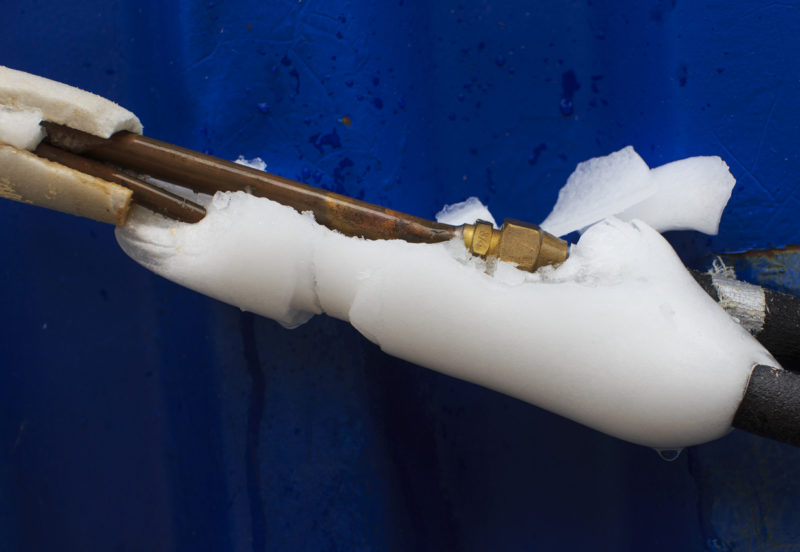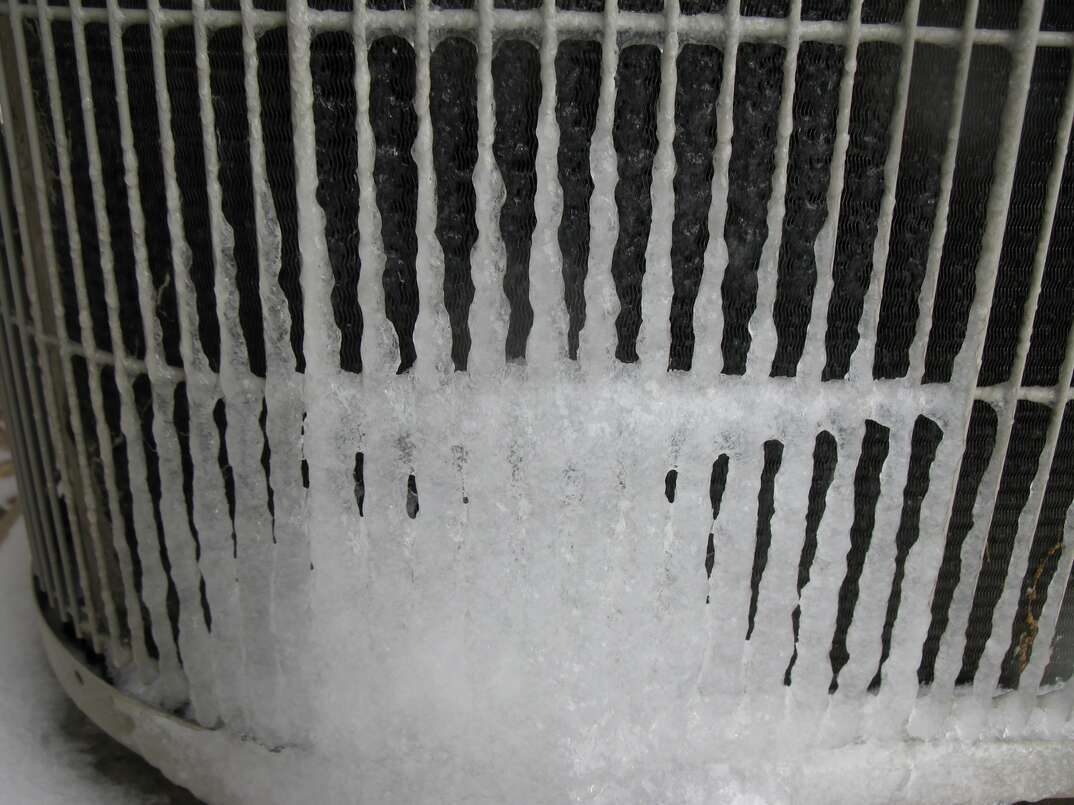Dealing With a Frozen AC Pipe - Guidance for Resolving the Issue
Dealing With a Frozen AC Pipe - Guidance for Resolving the Issue
Blog Article
This great article in the next paragraphs relating to What Do I Do If My AC Pipe Is Frozen is especially intriguing. Read it for yourself and figure out what you think about it.

Introduction
Uncovering that your air conditioner pipeline is iced up can be worrying, specifically throughout warm summertime when you rely upon your a/c unit one of the most. Comprehending what to do in such a situation is important to avoid further damage to your cooling system and ensure your convenience inside.
Recognizing the Causes
Numerous variables can add to the freezing of an air conditioning pipe. Understanding these reasons can assist you address the concern successfully.
Lack of Airflow
One common source of a frozen AC pipe is inadequate airflow. When the air movement over the evaporator coil is restricted, it can create the coil to drop below freezing temperature level, leading to ice formation on the pipeline.
Low Refrigerant Levels
Inadequate cooling agent levels in your a/c system can additionally lead to an icy pipeline. Low refrigerant degrees can create the pressure in the system to go down, bring about the freezing of moisture on the evaporator coil.
Cold Weather Conditions
In chillier environments, freezing temperatures outside can contribute to the freezing of air conditioning pipes. If your air conditioner device is not properly insulated or if there are leaks in the ductwork, cold air can infiltrate the system, triggering the pipe to freeze.
Dirty Air Filters
Filthy or blocked air filters can restrict airflow in your a/c system, causing different issues, including an icy pipeline. It's vital to change or clean your air filterings system consistently to make certain appropriate airflow and prevent ice build-up.
Indicators of a Frozen Air Conditioning Pipe
Recognizing the signs of an icy air conditioner pipeline is crucial for punctual action.
Lowered Airflow
If you notice a significant decline in airflow from your vents, it could indicate an icy pipeline.
Ice Buildup on the Pipe
Visible ice build-up on the cooling agent line or the evaporator coil is a clear indicator of a frozen air conditioning pipe.
Unusual Sounds from the Unit
Unusual audios, such as hissing or bubbling, coming from your a/c device can indicate that there's ice present on the pipeline.
Immediate Actions to Take
When faced with an icy air conditioning pipeline, it's vital to act rapidly to stop additional damages to your cooling system.
Switching off the air conditioning
The very first step is to shut off your ac unit to prevent the system from running and worsening the issue.
Checking for Blockages
Check the area around the indoor system for any kind of blockages that may be blocking air flow, such as furniture or drapes.
Defrosting the Pipe
You can utilize gentle approaches like positioning towels taken in warm water around the icy pipeline to assist thaw it gradually.
Safety nets
Taking preventive measures can help stay clear of future incidents of a frozen a/c pipeline.
When DIY Methods Fail
If your attempts to thaw the pipeline or address other concerns are unsuccessful, it's time to call in a specialist.
Significance of Hiring a Professional HVAC Technician
A qualified HVAC service technician has the knowledge and devices necessary to detect and repair issues with your a/c system safely and properly.
Normal Maintenance Checks
Set up normal upkeep get in touch with a specialist HVAC service technician to guarantee that your air conditioner system is running efficiently.
Transforming Air Filters
Frequently change or clean your air filters to prevent air movement constraints and maintain ideal efficiency.
Shielding Exposed Pipes
If your AC pipes are subjected to chilly temperature levels, take into consideration insulating them to avoid cold throughout cold weather.
Looking For Professional Help
If DIY approaches fall short to settle the concern or if you're unclear about how to continue, it's finest to look for help from a qualified HVAC professional.
Conclusion
Managing a frozen AC pipeline can be a frustrating experience, yet recognizing how to react can help lessen damage and bring back comfort to your home. By understanding the causes, recognizing the signs, and taking prompt action, you can successfully address the problem and protect against future occurrences.
Frozen AC Line: Why It Happens & What To Do About It
A frozen AC line can be a rather peculiar sight in a place like Phoenix, Arizona where nothing ever freezes. In this post, we’ll discuss what makes an air conditioner line frozen – and what you can do about it.
Dirty Air Filters
Did you know that you should be cleaning or replacing your air filters on a monthly basis? Failing to do this can result in airflow issues that, in turn, cause your evaporator coils and lines to freeze over. You’ll notice a buildup of ice on both components, although the buildup on your pipes will, of course, be more evident unless you open your air condition up to reveal the coils.
What To Do About It
Give your air filter a good cleaning if it’s reusable. If not, replace the filter outright. Next, switch your air conditioner’s fan setting on and leave it there for 2-3 hours. This will draw warm air in, helping to thaw your evaporator coil. You can also check out this article for some tips on cleaning the coils themselves if you’d like to speed the process up. Before you switch the unit back to its normal state, make sure the supply vents are completely unobstructed and free of dust or other debris.
If you keep having this issue even after replacing your filters regularly, contact a local HVAC repair company and have them inspect your evaporator coil, ductwork, and any other components that may be at fault. If you live in the Phoenix, Arizona area, give American Home Water and Air a call.
Low Refrigerant Levels/Leakage
What To Do About It
Contrary to what air conditioner “recharge” companies often tell their clients about refrigerant, it should never need to be simply refilled. You see, refrigerant runs in what experts refer to as a “closed loop.” Refrigerant really shouldn’t be leaving that loop. If it is, you’ve got a leak.
Paying someone to come and pump more refrigerant into your system (aka “recharge” it) isn’t the solution. Doing that will simply kick the can down the road. Besides, refrigerant leaks can be harmful to the environment and people in your home.
Rather, you need to take care of the leak with the help of a technician. Check out this article for some more information about dealing with air conditioners that are leaking refrigerant. Before you contact a technician, switch your thermostat to the off position. Then, switch the fan setting on and let it run for 2-3 hours so the unit can thaw.
Improper Temperature Setting
Improper temperature settings can also cause a drop in your air conditioner’s pressure. What many people don’t realize is that air conditioners are actually designed to run when temperatures have fallen above roughly 60 degrees Fahrenheit. If you run the unit when it’s cold outside, you’ll run into many issues, including frozen components.

I ran across that review on Have a Frozen AC Line? Here’s How to Fix It while doing a lookup on the search engines. Enjoyed reading our content? Please share it. Help somebody else find it. Thank you for your time invested reading it.
Book An Estimate Now Report this page